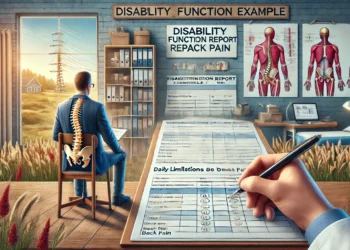Back pain is one of the most common health complaints worldwide, affecting millions of people each year. Whether it’s caused by poor posture, muscle strain, or a more serious medical condition, back pain can significantly impact a person’s quality of life. Many individuals seeking relief from their discomfort often wonder if medications like Xanax could help alleviate back pain. In this article, we will explore whether Xanax can effectively help with back pain and the associated risks of using it for this purpose.
What is Xanax?
Xanax is a prescription medication primarily used to treat anxiety and panic disorders. This helps to calm the brain and reduce feelings of anxiety. Xanax is also sometimes used to treat other conditions, such as insomnia or muscle spasms, under a doctor’s guidance.
Read Also: Best Sofa for Back Pain Sufferers: A Comprehensive Guide to Comfort and Support – Top Sofas for Relieving Back Pain!
How Does Xanax Work?
As a central nervous system (CNS) depressant, Xanax works by slowing down brain activity, leading to a feeling of calm and relaxation. This can be helpful for people dealing with anxiety or panic attacks, as it reduces the overwhelming feelings of nervousness or fear. By reducing anxiety, Xanax might temporarily help alleviate the muscle tension or discomfort that some people experience with stress-related back pain.
However, Xanax is not specifically designed to treat physical pain, especially back pain caused by issues like muscle strain, herniated discs, or arthritis.
Can Xanax Help with Back Pain?
While Xanax is not a painkiller, it can help in certain cases where back pain is associated with stress, anxiety, or muscle tension. For instance, if someone’s back pain is exacerbated by anxiety or tension, Xanax may help reduce these psychological factors, thereby indirectly easing the perception of pain.
Here are a few scenarios where Xanax might offer some temporary relief:

- Stress-Related Back Pain: Anxiety or stress can lead to muscle tightness, which can cause or worsen back pain. Xanax may help relax the muscles and reduce stress, which could provide temporary relief.
- Muscle Tension: Back pain caused by muscle spasms or tension may improve with the muscle-relaxing effects of Xanax. However, medications specifically aimed at relaxing muscles, such as muscle relaxants, are typically more effective.
- Sleep Disorders: Chronic back pain can interfere with sleep, which in turn exacerbates feelings of pain. Since Xanax can be used as a sedative to help with sleep, it might indirectly improve back pain by allowing individuals to rest more fully.
Risks of Using Xanax for Back Pain
While Xanax may offer temporary relief in certain situations, there are significant risks associated with using this medication for back pain, particularly if it is used outside of its prescribed purpose.
- Dependence and Addiction: One of the biggest concerns with Xanax is the risk of dependence and addiction. Benzodiazepines like Xanax are known to be habit-forming, and long-term use can lead to physical and psychological dependence.
- Side Effects: Xanax comes with several potential side effects, including dizziness, drowsiness, confusion, and impaired coordination. These side effects can be dangerous, particularly if you need to drive or perform tasks that require concentration.
- Overuse and Tolerance: Over time, individuals may develop a tolerance to Xanax, meaning they need higher doses to achieve the same calming effects. This can lead to overuse, overdose, and serious health complications.
- Masking Underlying Conditions: Using Xanax to treat back pain without addressing the root cause may mask more serious underlying issues, such as a herniated disc or spinal condition, which requires different treatment strategies.
Alternative Treatments for Back Pain
If you are dealing with back pain, it is essential to identify the cause and pursue appropriate treatment options. While Xanax may provide short-term relief for stress-related discomfort, it is not a solution for treating the pain itself. Here are some alternative treatments that may be more effective for managing back pain:
- Physical Therapy: Working with a physical therapist can help you strengthen muscles, improve posture, and address the root causes of your back pain.
- Over-the-Counter Pain Relievers: Nonsteroidal anti-inflammatory drugs (NSAIDs) like ibuprofen or acetaminophen can help manage mild to moderate back pain.
- Heat and Cold Therapy: Applying heat or cold to the affected area can help reduce inflammation, muscle spasms, and pain.
- Massage Therapy: Therapeutic massage can help alleviate muscle tension and promote relaxation, especially if your back pain is caused by stress or muscle tightness.
- Exercise: Regular exercise, including stretching, walking, and strength training, can help prevent and relieve chronic back pain.
When to Seek Professional Help
If you are experiencing back pain, it’s important to consult with a healthcare provider to determine the underlying cause and the best course of treatment. If stress, anxiety, or muscle tension is contributing to your pain, your doctor may recommend therapy, lifestyle changes, or appropriate medications that are safer and more effective than Xanax for long-term management.
FAQs:
Can Xanax relieve physical back pain?
No, Xanax is not intended for physical pain relief. It may help with back pain caused by stress or anxiety.
Is Xanax safe to use for back pain?
Xanax is not recommended for back pain due to risks like dependence, side effects, and its lack of effectiveness in treating physical pain.
What is the primary use of Xanax?
Xanax is primarily used to treat anxiety and panic disorders, not physical pain.
Can Xanax help with muscle tension causing back pain?
Xanax may reduce muscle tension caused by anxiety, but other medications are more effective for treating muscle spasms.
What are some alternative treatments for back pain?
Alternative treatments include physical therapy, pain relievers, heat/cold therapy, and exercise. Consult a healthcare provider for the best options.
Conclusion:
Xanax may offer temporary relief from back pain that is related to stress or anxiety, but it is not a long-term solution and carries significant risks, including dependence and side effects. If you’re seeking relief from back pain, it’s best to explore other treatment options, such as physical therapy, pain relievers, or stress management techniques. Always consult with a healthcare provider before using Xanax or any other medication to address back pain.By understanding the risks and benefits of Xanax and considering alternative therapies, you can make an informed decision about the best approach to managing your back pain.
Read More Relevant Article:
- Read Also: How to Relieve Back Pain from Large Breasts – Effective Ways to Relieve Back Pain Caused by Large Breasts!
- Read Also: How to Get 100% VA Disability for Back Pain – Steps to Secure 100% VA Disability Benefits for Chronic Back Pain!
- Read Also: Baytown Back Pain: Expert Solutions for Lasting Relief – Back Pain Relief in Baytown!











